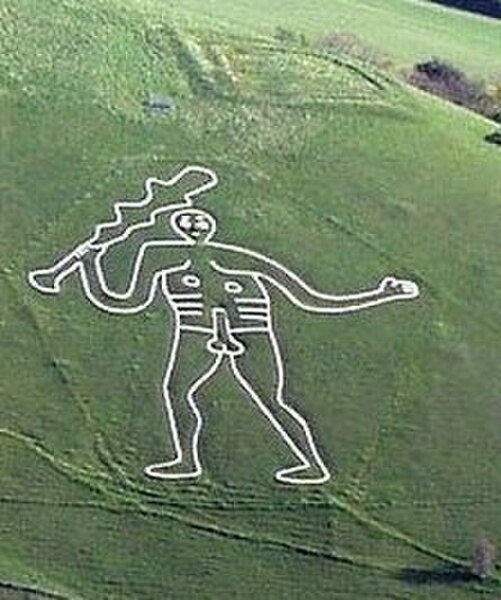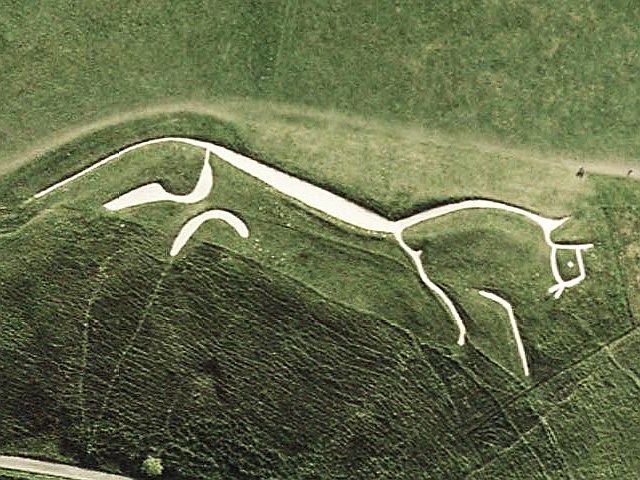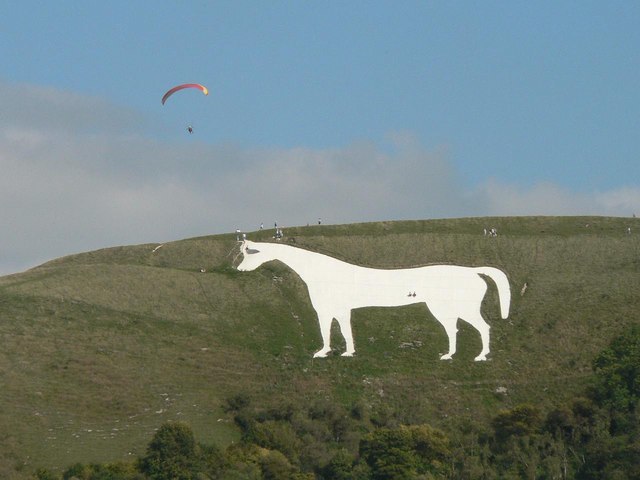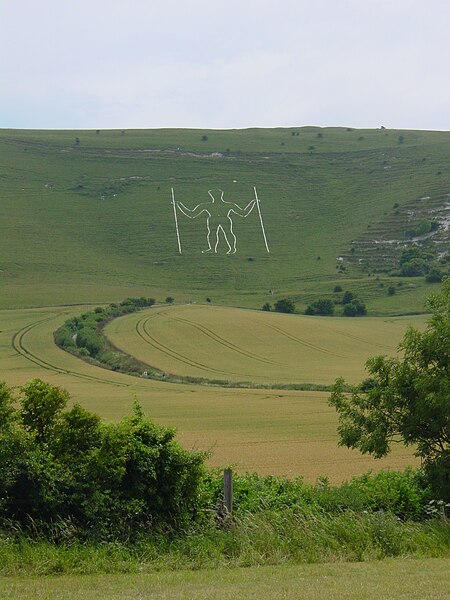The Cerne Abbas Giant is a hill figure near the village of Cerne Abbas, in Dorset, England. It is currently owned by the National Trust, and listed as a scheduled monument of England. Measuring 55 metres (180 ft) in length, the hill figure depicts a bald, nude male with a prominent erection, holding his left hand out to the side and wielding a large club in his right hand. Like many other hill figures, the Cerne Giant is formed by shallow trenches cut into the turf and backfilled with chalk rubble.
Cerne Abbas Giant chalk figure below the rectangular "Trendle" earthworks
1764, first known drawing from the Gentleman's Magazine with measurements, including the height of 180 feet (55 m)
1842 drawing by the antiquary and editor John Sydenham
1892 drawing by the author and antiquarian William Plenderleath
A hill figure is a large visual representation created by cutting into a steep hillside and revealing the underlying geology. It is a type of geoglyph usually designed to be seen from afar rather than above. In some cases trenches are dug and rubble made from material brighter than the natural bedrock is placed into them. The new material is often chalk, a soft and white form of limestone, leading to the alternative name of chalk figure for this form of art.
The Cerne Abbas Giant chalk figure, near the village of Cerne Abbas in Dorset, England, is made by a turf-cut.
The Uffington White Horse at Uffington, Oxfordshire
The 18th-century Westbury White Horse near Westbury, Wiltshire
The Long Man of Wilmington seen from a distance







